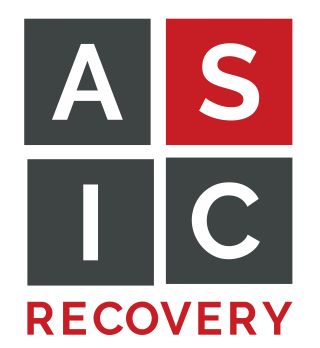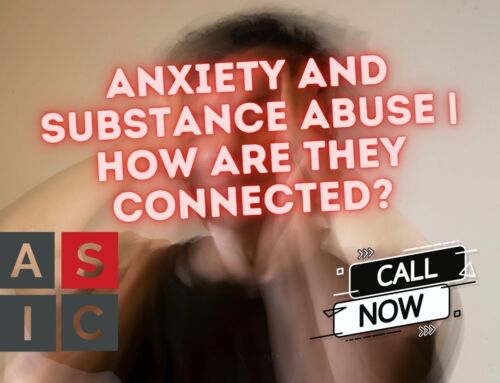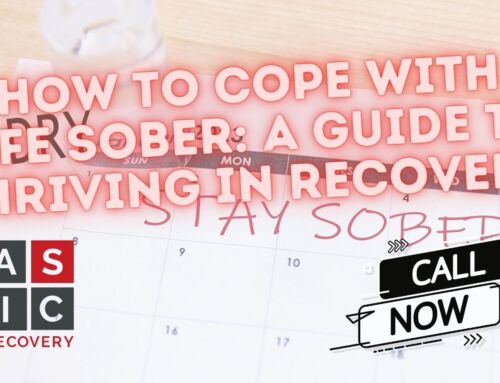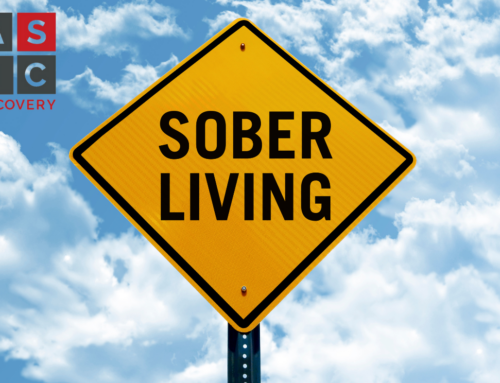Methadone clinics are medical facilities that prescribe and distribute methadone to opioid addicts who want to quit their drug of choice (often Fentanyl or heroin).
Methadone is a common drug used for the treatment of opioid addiction. Due to its similarities to other opioids, it can help reduce cravings for drugs like heroin and Oxycontin and provide relief from withdrawals.
Due to its mild but long-lasting effects, methadone can be administered just once and relieve you of your desire for opioids for an entire day (and sometimes up to 48 hours).
Although methadone is a “safer” opioid, it can still be dangerous, especially if you mix it with other drugs. You should only take it under the care of a medical professional.
There is still a chance of addiction and even overdosing when taking methadone, but those risks are drastically reduced at methadone clinics.
What Methadone Clinics Do
Methadone clinics are medical facilities where you can get medication-assisted treatment (MAT), which helps with cravings and is a way to wean off of your drug of choice and prevent major withdrawal symptoms.
Under the guidance of medical professionals, you will be prescribed a certain amount of methadone daily. That dosage depends on how much you were using.
Over time, the dosage will shrink in coordination with your body’s tolerance level, and you will eventually be weened off entirely once withdrawal symptoms aren’t a risk or when your addiction has gotten under control.
On top of providing medications, methadone clinics offer a number of addiction and recovery services to help tackle both the physical and mental aspects of addiction.
Medication-Assisted Treatment (MAT)
Methadone is just one form of MAT. In addition to methadone, other drugs may be administered to help the recovery process. Some prescriptions may be used to reduce cravings and withdrawal symptoms while others may be administered to help normalize brain chemistry.
These drugs may even be administered in lieu of methadone, depending on you and your addiction history.
Naltrexone is a non-addictive drug commonly found in clinics whose purpose is to further block opioid receptors and reduce cravings while in treatment.
Cognitive Behavioral Therapy
Cognitive Behavioral Therapy (CBT) is one of the most popular methods of battling addictive behaviors and is being used in treatment centers all around the globe.
CBT addresses the way our thoughts influence our actions and helps people to not only become aware of that connection but to utilize that connection to develop healthier thinking patterns, which ultimately translates to healthier lifestyles and less addictive behavior.
Family Therapy
This treatment is centered on how the family unit can influence the individual’s behavior both positively and negatively.
This will teach family members the necessary skills to help the user get over their addiction and educate them on what behaviors might trigger a relapse.
Counseling
Counseling at methadone clinics isn’t just limited to medication and therapy. You can also get help with other aspects of your life.
Whether it be helping you find a 12-step group or helping you find work, counselors at these clinics will do whatever they can to help you get your life back on track.
How Methadone Clinics Work
Methadone clinics are medical facilities created for the sole purpose of helping addicts fight their opioid addiction.
To be admitted into one, you need to take urine and blood tests to determine whether your drug abuse has been severe enough to warrant methadone, and, if that is the case, what dosage you will be able to safely take as you start to wean off the drug.
You also must undergo physical and mental health checks and provide all necessary medical information so you can receive tailored treatment.
The length of time it takes to get admitted varies on the person and the severity of the addiction. In some cases admission, you can get in immediately. In other cases, you can wait several weeks for tests to come back and evaluations to be completed.
If the clinic decides you’re a good fit for methadone treatment, there are a few options, depending on the severity of your addiction.
Inpatient Treatment
Inpatient treatment is when you’re in the facility 24/7 and receive round-the-clock care and supervision over your usage. It’s the most expensive version of methadone treatment because of how many resources are needed to ensure your recovery.
Inpatient care can be done in clinics, hospitals, or rehabilitation centers. You usually go in for about 30 days, though some places will let you stay for up to 90 days (and possibly longer).
Outpatient Treatment
Outpatient treatment (like IOP) is sometimes a better fit in milder cases or when someone has finished inpatient treatment.
You will generally show up daily or every other day and be administered a prescribed dose of methadone, and then after that, you are free to go about your life as normal.
You will still have access to a number of other resources besides methadone. If CBT or any other therapy is offered at the clinic, it will still be available in outpatient care.
Paying for Methadone Treatment
Methadone clinics accept most insurance coverage, and they also provide help for uninsured patients through state and federal funds.
According to the National Institute on Drug Abuse, methadone clinics cost in around $126 per week with no insurance, which includes access to both medication and all other recovery services at the clinic.
The price will vary based on the quality of the clinic, where you live, how much your insurance provider agrees to cover, and whether you’re receiving inpatient or outpatient care at the facility.
Evidence for Methadone Clinics Effectiveness
Methadone has been used to fight opioid addiction since the 1940s. It’s been thoroughly studied, and it’s actually pretty effective — possibly even more effective than Suboxone treatment.
According to a comprehensive 2009 study, methadone paired with other psychosocial treatments, such as CBT, reduced drug use by 33%, and patients were over 4x more likely to stay in treatment programs compared to control groups.
This study also indicated that methadone treatment was enough to significantly reduce opioid abuse even without counseling or any other therapies.
In a separate study on 17,568 adults who had survived an opioid overdose between 2012 and 2014, the chance of dying was reduced by 59% for those receiving methadone treatment vs those who were not.
Buprenorphine, although slightly less effective, was shown to decrease the risk of death in opioid abusers by 38%, causing the National Institute of Health to declare that these treatments were both highly effective and underutilized in fighting the opioid epidemic.
On the non-medicinal side of things, cognitive behavioral therapy has been shown to reduce addictive behavior in a number of studies. One meta-analysis found that CBT as an addiction treatment was consistently helpful.
Some effects were only found to be mild, but every study concluded that CBT has at least a small, positive correlation to addiction recovery. Many others showed that CBT was extremely helpful.
CBT treatment is obviously most effective in fighting opioid addiction when paired with other types of treatment, but even by itself, it does produce results.
Common Myths About Methadone Clinics
While methadone treatment has been proven to be effective, there are a number of prevailing myths about methadone that should be addressed.
Myth #1: Methadone Treatments Will Get You High
While abusing methadone can produce similar effects to OxyContin and heroin, taking methadone under the guidance of a medical professional should not result in the patient being high.
Initially, as proper doses are being worked on, there may be some similar effects. Drowsiness and lightheadedness are common, but that should wane relatively quickly, and the dosage should be low enough to only reduce withdrawal symptoms and block opioid receptors.
As long as you’re being honest about how much you normally use and what other drugs you’re using, you’re likely going to quickly get to a point where the methadone just does its job — keeps you from having cravings and from going into withdrawals.
Myth #2: Methadone Causes Bone and Tooth Rot
This is another common myth about methadone.
This became widespread due to some intense cases of dry mouth in methadone patients, but there is no evidence that it has any adverse effects on your bones and teeth.
What’s most likely happening in those cases is that these patients were taking other drugs, especially uppers, that cause dry mouth, or they just weren’t taking care of themselves — they had poor hygiene.
Myth #3: Patients Who Regularly Take Methadone Are Addicted
As mentioned, when methadone treatments are going correctly, there is only the initial, dose-correcting phase where patients would feel anything close to a high.
Once dosages are settled and people begin returning to their normal lives, the amounts consumed should not be producing euphoric feelings.
Yes, technically speaking, you have a physical dependence on methadone, but you should have few cravings, and addictive behavior should be drastically reduced. It just becomes a medicine you have to take every day.
It’s only when methadone is misused that going back to those old addict behaviors becomes a risk.
Myth #4: Methadone is Dangerous for Pregnant Women
While it is true that methadone should be avoided when pregnant whenever possible, when it’s part of opioid treatment, methadone gives both the mother and the child the best chance of having a complication-free pregnancy.
Babies born to mothers on methadone have been shown to have neonatal abstinence syndrome, but this is easily treated by doctors, and the effects of it are far less severe than any other opioid, with the only possible exception being buprenorphine.
If you can stay sober while you’re pregnant, that’s best, but it’s better to just be taking methadone once a day than to be injecting heroin or Fentanyl and putting your life and your baby’s life at risk.
Risks Associated With Methadone Treatment
As mentioned, while methadone treatment has been shown to be incredibly helpful in getting people free of opioid addiction, it’s not risk-free.
Methadone is classified as a schedule II narcotic by the DEA, meaning that it is widely accepted for medical use but is still an addictive substance that can be dangerous if misused.
If you take more methadone than you’re prescribed or mix it with other drugs, you put yourself in danger of overdose or death.
Methadone-related overdoses peaked around 2019 when the CDC was reporting approximately 5,000 overdoses from methadone yearly. There has been a slight waning of those numbers in the past few years, but it’s still a danger.
Even though methadone is recognized as having medicinal use, it should never be used as a means of self-medication. In order for methadone to be safe, it needs to be taken only with a doctor’s prescription and only in the recommended dose.
Adverse effects of methadone include:
- Sweating
- Constipation
- Body aches
- Addiction
- Irregular Heartbeat
- Depressed Respiratory Function
- Anaphylactic Reactions
- Overdose
Not everyone experiences adverse effects. When taken under the guidance of a doctor, most side effects are mild and can be treated quickly.
How to Know Whether Methadone Clinics Are Right for You
If you are struggling with an addiction to heroin, OxyContin, or any other opioid, and you haven’t been able to break the habit by yourself, then methadone might be for you. However, methadone treatment by itself is rarely enough.
If you’ve struggled with traditional 12-step programs, methadone might help you get to a point where you can eventually wean off and become completely drug-free.
It’s a personal choice, but it’s best to talk over with a medical professional.
IOP at ASIC Recovery
Are you looking for addiction treatment in Texas? At ASIC recovery, our Intensive Outpatient Program (IOP) is dedicated to helping you develop healthier coping skills and build a supportive recovery network.



